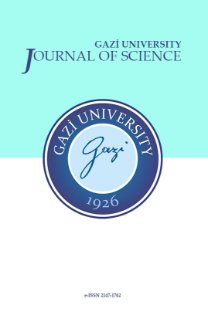Spirituality of Light in the Mosque by Exploring Iranian-Islamic Architectural Styles
Spirituality of Light in the Mosque by Exploring Iranian-Islamic Architectural Styles
Spirituality of light, Historical mosques Contemporary mosques, Iranian-Islamic architecture style, ELI,
___
- [1] Sadrykia, S., Bemanian, M. R., and Ansar, M., “The Quality of Meaning Perception in Daylight Spaces”, Hoviat shahr Journal, 12: 1-18, (2018).
- [2] Hashempour, P., and Gholizadeh Orang, F., “Evaluation of the way of manifestation of light in the architecture of the mosques with a case study in the middle axis of Tabriz city (Golestan Garden to the waterfall of Abersan)”, Iranian Journal of Mystery and Urbanism, 11: 101-114, (2016).
- [3] Ardalan, N., and Bakhtiar, L., “Sense of Unity; The Sufi Tradition in Persian Architecture”, Tehran: Yaghmayi Publication, (2019).
- [4] Hejazi, M., and Mehdizadeh Saradj, F., “Relation among Meaning, Aesthetics, Shape and Structure in Islamic Architecture of Iran”, Iran University of Science & Technology, 2: 9-24, (2014).
- [5] Saadat Joo, P., Hamzehnejad, M., and Noghrehkar, A. H., “An analysis of the evolution of concepts and the physical pattern of mosques in the fourfold periods of Iranian architecture”, Iranian-Islamic Studies Journal, 13: 15-30, (2013).
- [6] Pirnia, M. K., “Stylistics of Iranian Architecture”, Ghulam Hussein Memarian's Publishing, Eighth Edition, Tehran: Author's Publications, (2017).
- [7] Bemanian, M. R., and Alinasab, M. A., “Investigating the role of light in explaining the sequence of architectural space of mosques (case study: Sheikh Lotfollah Mosque)”, Art Research Journal, 2(4): 71-82, (2012).
- [8] Hoomanirad, M., and Tahbaz, M., “Assessment of Daylight Role in Creating Spiritual Mood in Contemporary Mosques”, Urmanshahr, 7: 11- 23, (2014).
- [9] Mahdavinejad, M. J., Mashayekhi, M., and Bahrami, M., “Mosque design patterns in contemporary architecture, Journal of Reasearch in Islamic Architecture, 5: 3- 17, (2015).
- [10] Faranda, R., and Fumagalli, K., “Energy Saving Through Solar Lighting Systems”, Wseas Transactions on Power Systems, 3: 475-484, (2008).
- [11] Azad, M., “The Effect of Natural Light on the Quality of Religious Spaces (Case Study of Sheikh Lotfollah Mosque)”, 7th International Conference on Sustainable Development and Urban Development, Isfahan, Institute of Higher Education of Advanced Scholars, (2017).
- [12] Hoomanirad, M., and Sharafi Nanfar, A., “Conduct in the ergonomic ratio and the spirituality of daylight in the architecture of the mosques”, Urmanshahr, 8: 1-14, (2015).
- [13] Dehoff, P., “Lighting Quality and Energy Efficiency Is Not A Contradiction”, Light & Engineering, 20: 34- 39, (2012).
- Yayın Aralığı: 4
- Başlangıç: 1988
- Yayıncı: Gazi Üniversitesi, Fen Bilimleri Enstitüsü
Design of a Low Cost X-Band LNA with Sub-1-dB NF for SATCOM Applications
Galip Orkun ARICAN, Nursel AKÇAM
Electromagnetic Band Gap Based Via-less Jeans Patch Antenna for 5.5GHz WiMAX Application
Sangeeta SHEKHAWAT, Sanjay Kumar SİNGH, Sudhanshu SİNGH, Ashutosh TRİPATHİ
Mostefa LEFAHAL, El-hani MAKHLOUFI, Radia AYAD, Ahlem BOUSSETLA, Mohamed ELHATTAB, Merve KESKİN, Salah AKKAL
Pei JU, Dongzhuang TİAN, Hongjie TİAN
Hatice Mehtap BULUKLU, Filiz BAL KOÇYİĞİT, Ercan KÖSE
New Zero Cross-Correlation Codes Based on Zech Method’s for OCDMA Systems
Bensaad ABDELLAH, Garadi AHMED, Beloufa ABBES, Bensaad ZOUAOUİ
Gas Turbine Performance Monitoring and Operation Challenges: A Review
